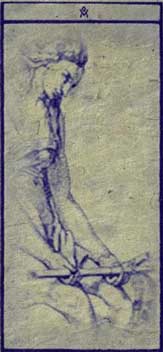
“We pretended to be of mud instead of stars.
We pretended not to fly.
And the people below us pretended to believe.”1
A widespread picture of social consciousness is that of perceiving, realizing and knowing what certainly needs to be done to solve the different issues our society is dealing with. “How could you fail to kneel down before this altar of certitude?”2 However, social consciousness is enhanced by raising questions rather than by concluding we have the irrevocable answers to them. It rises up all who are bowed down if consciousness is considered to be an unending query, being attentive that definite responses can limit possibilities of understanding, while questions open them. “There are moments in life where the question of knowing whether one might think otherwise than one thinks and perceive otherwise than one sees is indispensable if one is to continue to observe or reflect.”3
Why? Because our social consciousness forgets to play fair when what we think we know becomes challenged. For example, when European travelers encountered persons who seemed different than them in the so-called “New World,” the accepted notions of the human species’ origins had to be questioned; bringing up for inquiry if these different persons were to be regarded as an equal part of the “family of man.” At issue were the necessary conversion to Christianity and the way these different ones were to be treated. Confiscating property, taking away political rights, introducing slavery and various types of forced labor, and utter annihilation, sprung from a social consciousness that differentiated Europeans from these others, justifying all these unfair acts.4 The perception of difference was a vital factor in the social consciousness of those times.
That’s why we should always question what was once generally concluded to be known. To claim a fair social consciousness, we must always search for answers other than those we think we already have. For instance, “In 1973, the weight of empirical data, coupled with changing social norms and the development of a politically active gay community in the United States, led the Board of Directors of the American Psychiatric Association to remove homosexuality from the Diagnostic and Statistical Manual of Mental Disorders (DSM)”. The APA has since worked intensively to eradicate the stigma historically associated with a homosexual orientation.5 The perception of difference is a vital factor in the social consciousness of these times.
A healthy state of uncertainty regarding our assumptions transforms us. Constant revision of what we believe to be fair is required; allowing for better coexistence with each other. Social awareness, indignation, and compassion do not begin in any one’s singular, isolated consciousness. These move toward each one of us from everyone everywhere, gather strength within us and lift us up beyond ourselves.
“Our once was taken from us, and we split into two peoples:
those who remained in the castle,
and those who fled for safer skies.”6

- Shana Abe. The Dream Thief
- Umberto Eco. Foucault’s Pendulum
- Michel Foucault. The History of Sexuality
- Michael Omi, Howard Winant. Racial Formation in the United States
- Facts About Homosexuality and Mental Health
- Shana Abe. The Dream Thief
Leave a Reply